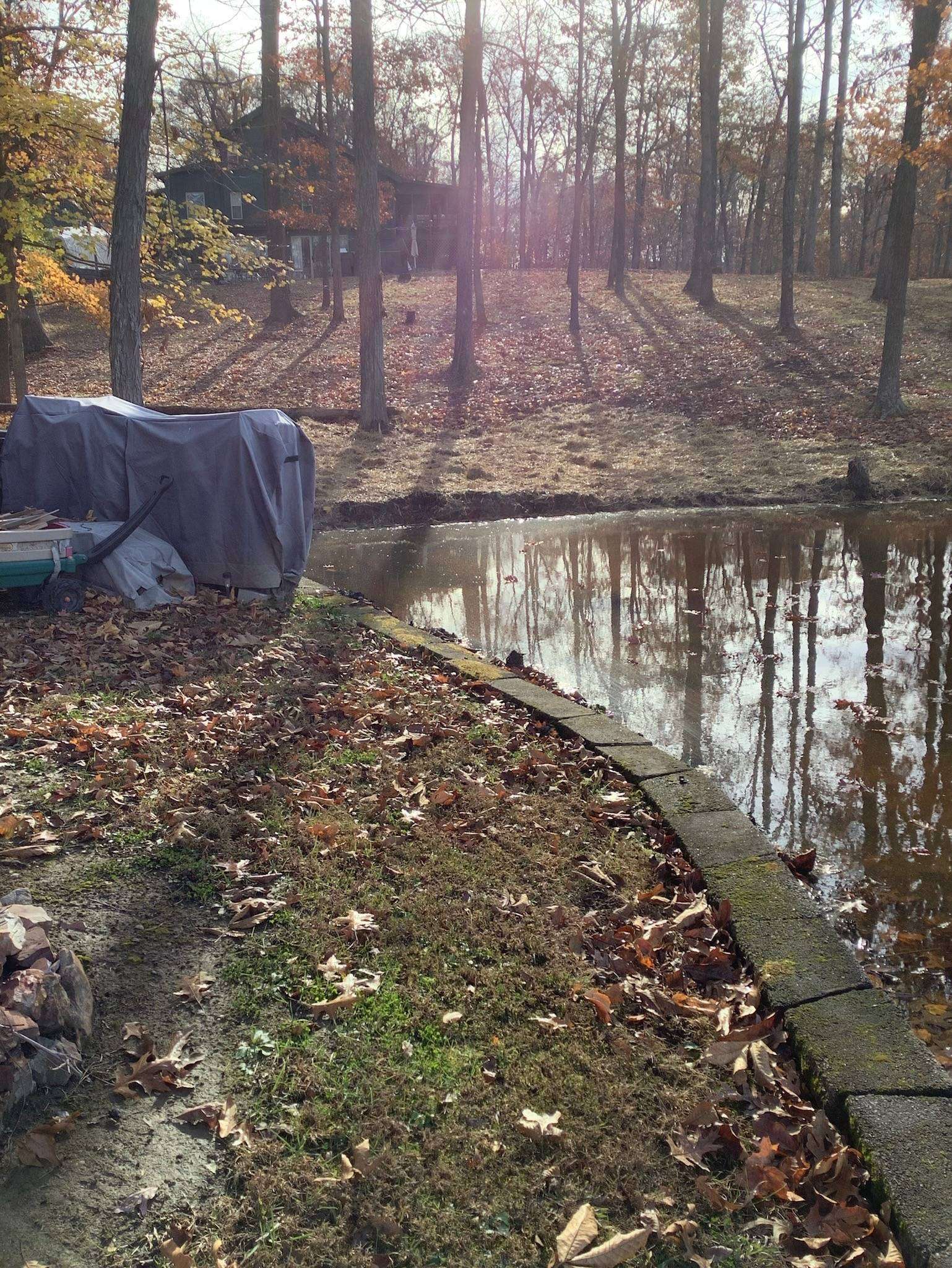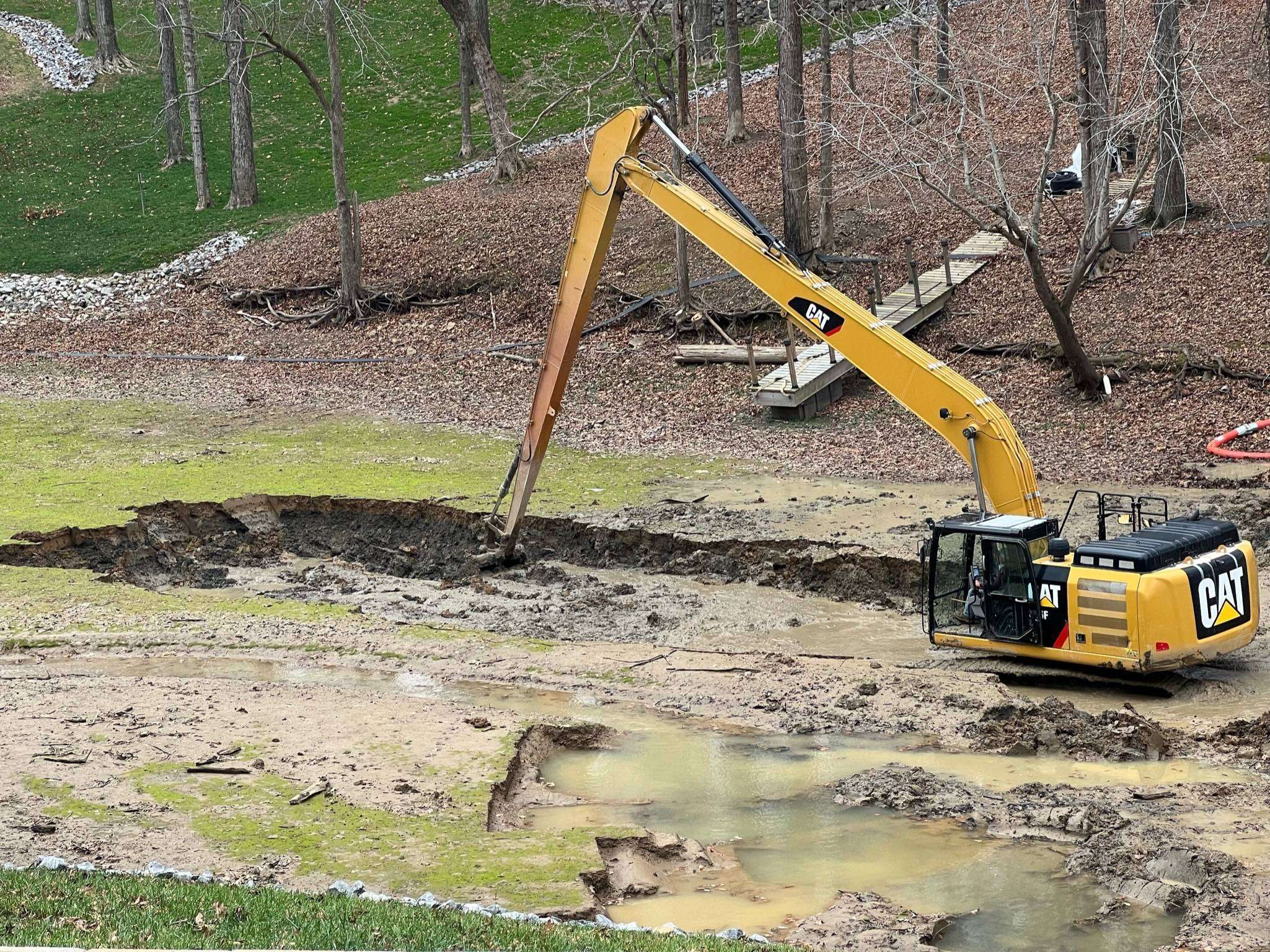Riverbank erosion is a natural process caused by a combination of natural factors and human activities. This article will explore the causes, effects, and solutions to this widespread environmental issue.
From the destruction of property to changes in river flow, the effects of riverbank erosion are far-reaching. Fortunately, there are various engineering, natural, and preventive solutions that can help mitigate the impacts of erosion. By understanding the root causes and implementing effective strategies, we can work towards preventing and managing riverbank erosion effectively.
Key Takeaways:
- Riverbank erosion is the process by which the banks of a river are worn away by natural or human causes.
- Both natural causes, such as floods and erosion, and human activities, such as deforestation and construction, contribute to riverbank erosion.
- Riverbank erosion can have devastating effects, including property damage, loss of land and agriculture, and changes in river flow.
What Is Riverbank Erosion?
Riverbank erosion refers to the process of soil or rock wearing away from the banks of rivers or streams due to natural forces or human activities.
Riverbank erosion occurs when the continuous flow of water along the riverbanks gradually removes the sediment, leading to the widening and deepening of the watercourse. Natural factors such as heavy rainfall, strong currents, and fluctuations in water levels contribute to erosion. Human activities like deforestation, urbanization, and improper land use practices can accelerate erosion rates. The impacts of riverbank erosion are far-reaching, affecting ecosystems, water quality, infrastructure, and communities along the riverbanks.
To combat this issue, various measures can be implemented, including bank stabilization techniques, land use management strategies, and vegetation restoration efforts.
What Are The Causes Of Riverbank Erosion?
Riverbank erosion can be attributed to both natural causes, such as heavy rain and mass failure, and human activities like improper land use and river redirection.
Mass failure, a significant natural process, occurs when the soil on a riverbank becomes too saturated with water, leading to collapse and erosion. Heavy rainfall can exacerbate this by increasing water flow and pressure on the banks, accelerating the erosion process.
On the other hand, human interventions like improper land use, which includes deforestation and construction too close to the bank, can weaken the soil structure, making it more prone to erosion. River redirection, often done for construction purposes or flood management, can alter the natural flow of water and cause increased erosion in certain areas.
Natural Causes
Natural causes of riverbank erosion include heavy rainfall that increases water flow, leading to river bank collapse and mass failures during extreme weather events.
When heavy rainfall occurs, the water levels in rivers rise significantly, putting immense pressure on the riverbanks. The force of the rushing water can weaken the soil structure, making it vulnerable to collapse. This process can eventually lead to mass failures where large chunks of the riverbank give way, exacerbating erosion.
The intensity and duration of rainfall play a crucial role in the degree of erosion. Intense rainfall events over short periods can cause rapid erosion, while prolonged rainfall can saturate the soil, further weakening the stability of the riverbanks.
Human Activities
Human activities such as improper erosion control measures, lack of vegetation on riverbanks, and river redirection projects can accelerate the process of riverbank erosion.
When erosion control measures are not implemented effectively, it leads to increased vulnerability of riverbanks to erosion. In the absence of vegetation, which plays a vital role in stabilizing soil and preventing erosion, the riverbanks are left exposed to the erosive forces of water and wind.
River redirection schemes can disrupt the natural flow of a river, altering sediment transport patterns and causing more aggressive erosion along certain sections of the riverbanks. These alterations can further contribute to the degradation of riverbank stability and exacerbate erosion processes over time.
What Are The Effects Of Riverbank Erosion?
The effects of riverbank erosion manifest in the destruction of property, loss of valuable land for agriculture, and alterations in the natural flow patterns of rivers and streams.
When riverbanks erode, the consequences are often far-reaching and impactful. Property owners along the banks witness their homes being gradually consumed by the relentless force of the water, leading to significant financial losses and emotional distress.
Agricultural operations that rely on fertile soils found in river valleys suffer immensely, as the erosion diminishes arable land, disrupting crop cultivation and affecting the livelihoods of farmers. The changes in river flow dynamics caused by erosion can result in excessive sediment buildup, altering the ecological balance of the water bodies and affecting aquatic habitats.
Destruction Of Property
Riverbank erosion poses a significant threat to properties along water bodies, leading to structural damage, collapse of fences, and loss of valuable land adjacent to rivers or creeks.
Structural vulnerabilities caused by riverbank erosion can compromise the stability of buildings and infrastructure situated in close proximity to the water. The gradual wearing away of the soil can undermine the foundations of homes, businesses, and other constructions, jeopardizing their structural integrity. As the erosion progresses, it can result in the collapse of fences that were once barriers between the land and the water’s edge, leaving properties exposed and vulnerable to further damage.
Loss Of Land And Agriculture
Riverbank erosion results in the gradual loss of arable land and disruption of agricultural activities, affecting vegetation growth as the exposed roots of plants destabilize.
As riverbanks erode, the fertile topsoil that supports crop growth is washed away, diminishing the agricultural productivity of the affected areas. The exposed roots of plants due to erosion not only compromise the stability of the vegetation but also disrupt the complex root systems which are essential for nutrient uptake and moisture retention.
- Strategies such as planting cover crops
- building retention walls
- implementing sustainable land management practices
Changes In River Flow
Riverbank erosion can alter the natural flow patterns of rivers, leading to increased risks of flooding, channel shifts, and sediment deposition downstream.
When riverbanks erode, the stability of the river’s banks is compromised, which can intensify the rate of water flow during heavy rainfall events, exacerbating the likelihood of flooding along the river. This erosion can also result in changes to the river’s channel shape and course, impacting the overall flow dynamics. Sediment that is eroded from the riverbanks can further obstruct the river’s flow, leading to issues such as sedimentation downstream and hindering navigation for boats and ships.
What Are The Solutions To Riverbank Erosion?
Various solutions exist to address riverbank erosion, including erosion control measures using materials like coir fiber, geotextiles, and vegetation restoration techniques.
Coir fiber, derived from coconut husks, has gained popularity as a natural and sustainable material for erosion control along riverbanks. Its ability to absorb water and ensure soil stability makes it an effective solution.
Geotextiles, on the other hand, provide a durable and synthetic option to reinforce the soil structure and prevent erosion. Integrating a combination of these materials with vegetation restoration establishes a comprehensive approach to combat riverbank erosion, ensuring long-term sustainability of the ecosystem.
Hard Engineering Solutions
Hard engineering solutions involve the use of erosion mats, coir logs, and gabions to stabilize riverbanks and prevent further erosion through structural interventions.
These methods are crucial in managing riverbank erosion by providing physical barriers that protect the banks from the destructive forces of water flow.
- Erosion mats are typically made of biodegradable materials like straw or coconut fiber, creating a protective layer that helps in establishing vegetation and stabilizing the soil.
- On the other hand, coir logs act as cylindrical structures that bolster the banks by absorbing water and promoting vegetation growth.
- Gabions, which are wire mesh cages filled with rocks, offer a robust solution by providing both structural reinforcement and enhancing the natural habitats along riverbanks.
Soft Engineering Solutions
Soft engineering solutions like Flexamat concrete mats and vegetation planting offer sustainable approaches to erosion control by promoting natural stabilization and root reinforcement along riverbanks.
Flexamat concrete mats are an excellent solution for protecting riverbanks from erosion. These mats not only provide immediate erosion control but also allow vegetation to grow through them, further enhancing stability. By integrating vegetation planting with Flexamat mats, a natural reinforcement system is established, offering long-term protection against soil erosion. Eco-friendly erosion control methods such as biodegradable coir logs and geotextiles can be utilized to enhance the overall sustainability of riverbank protection projects.
Natural Solutions
Natural solutions for riverbank erosion involve planting willow trees, promoting erosion control through root systems, and preventing mass failures by stabilizing slopes and embankments naturally.
Willow trees are highly efficient in reducing erosion due to their extensive root systems that bind the soil together, reducing the impact of flowing water. These trees play a crucial role in stabilizing riverbanks, preventing sediment buildup, and creating habitats for diverse wildlife. Their deep roots help anchor the soil, preventing it from being washed away during heavy rain or flooding. Willow trees can enhance the aesthetic appeal of riverbanks, providing a natural and sustainable solution to erosion control.
How Can We Prevent Riverbank Erosion?
Preventing riverbank erosion requires strategies such as proper land use planning, soil stabilization techniques, and the establishment of riverbank vegetation to maintain natural stability.
Land use planning plays a crucial role in preventing riverbank erosion by ensuring that development is done in a sustainable manner that takes into account the natural landscape and the flow of rivers. By implementing zoning regulations, development setbacks, and erosion control measures, communities can minimize the impact of human activities on riverbanks.
Soil stabilization practices involve using techniques such as bioengineering, gabions, riprap, and planting vegetation to strengthen the soil structure and prevent erosion. These methods help reduce the vulnerability of riverbanks to erosion caused by water flow and weathering.
The role of vegetation in erosion prevention cannot be overstated. Plants along riverbanks help stabilize the soil, absorb excess water, and provide habitat for wildlife. Trees, shrubs, and grasses with deep root systems are particularly effective in holding the soil in place and reducing the erosive forces of water.
Proper Land Use Planning
Effective land use planning involving cooperation with government agencies can help mitigate riverbank erosion risks, especially in regions prone to natural disasters like Hurricane Ian.
Regarding addressing the serious issue of riverbank erosion, a collaborative effort between public authorities and local communities is crucial. By developing comprehensive risk mitigation strategies that take into account the geological, environmental, and social factors at play, it becomes possible to reduce the vulnerability of these areas to erosion. Through proper disaster preparedness measures and sustainable land management practices, the impacts of events like severe flooding or sediment transport can be minimized. Government partnerships play a key role in this process by providing the necessary support, resources, and expertise to implement effective solutions that protect both the environment and communities.”
Soil Stabilization
Soil stabilization methods utilizing coir coconut fiber can enhance erosion control effectiveness, particularly in areas susceptible to flooding and soil erosion.
Coir coconut fiber is a natural, biodegradable material that has proven to be instrumental in maintaining soil integrity and preventing erosion in flood-prone regions. When coir fibers are mixed with soil, they create a stable environment that resists the impact of heavy rainfall and rushing water, reducing the risk of land degradation. The use of coir coconut fiber can improve soil structure, promote water retention, and enhance the growth of vegetation which further aids in reducing erosion. By incorporating coir coconut fiber into erosion control strategies, communities can achieve sustainable and long-lasting solutions for protecting their land from the devastating effects of floods and erosion.
Riverbank Vegetation
Planting vegetation along riverbanks, incorporating root systems, and utilizing sandbags can bolster erosion prevention efforts by enhancing natural stability and water absorption capacities.
The presence of riverbank vegetation plays a crucial role in stabilizing soil and preventing erosion by anchoring the soil with its extensive root systems. The roots bind the soil particles together, creating a natural barrier against water flow and reducing the risk of bank erosion.
Plus the root reinforcement, sandbags can be strategically placed along vulnerable riverbanks to provide temporary support and protection against rapid erosion. These sandbags act as a physical barrier, absorbing the impact of water flow and minimizing soil displacement.
Ecological restoration practices, such as replanting native vegetation and creating vegetated buffers, are essential for long-term sustainable riverbank protection. By restoring the natural ecosystem along riverbanks, these practices help maintain biodiversity, improve water quality, and enhance the overall resilience of riverbank environments.
Maintenance Of River Channels
Regular maintenance of river channels, incorporating materials like granite, and strategic river redirection projects can help alleviate the impacts of riverbank erosion and preserve natural waterway integrity.
By ensuring the consistent upkeep of river channels, erosion issues that threaten the stability of riverbanks can be effectively managed. Materials like granite are particularly advantageous due to their durability, providing long-lasting protection against the forces of water flow. Incorporating these materials into riverbank structures fortifies them against erosion and strengthens the overall ecosystem of the watercourse. Implementing well-planned river redirection projects not only helps in controlling erosion but also contributes to maintaining the functionality of the waterway, ensuring it serves its ecological and practical purposes efficiently.
Frequently Asked Questions
What are some common solutions for riverbank erosion?
Some common solutions for riverbank erosion include the use of riprap, vegetative stabilization, bioengineering techniques, and structural methods such as retaining walls and gabions.
Is riprap an effective solution for riverbank erosion?
Yes, riprap is often used as a cost-effective and durable solution for riverbank erosion. It involves placing large rocks or concrete blocks along the riverbank to absorb and deflect the force of the water.
How does vegetative stabilization help prevent riverbank erosion?
Vegetative stabilization involves planting native vegetation, such as trees and shrubs, along the riverbank to help absorb and slow down the flow of water. This can also help to strengthen the soil and prevent erosion.
What are bioengineering techniques for riverbank erosion?
Bioengineering techniques use live plants and natural materials to stabilize riverbanks. This can include techniques such as using live willow stakes or planting root systems to help hold the riverbank in place.
Are structural solutions necessary for all cases of riverbank erosion?
No, structural solutions such as retaining walls and gabions may not be necessary for all cases of riverbank erosion. These solutions are typically used in areas with high erosion rates or where other solutions are not feasible.
Can riverbank erosion be prevented in the long term?
While it may not be possible to completely prevent riverbank erosion, implementing a combination of erosion control measures can help to minimize its effects in the long term. Regular monitoring and maintenance of these measures is also important for long-term success.











